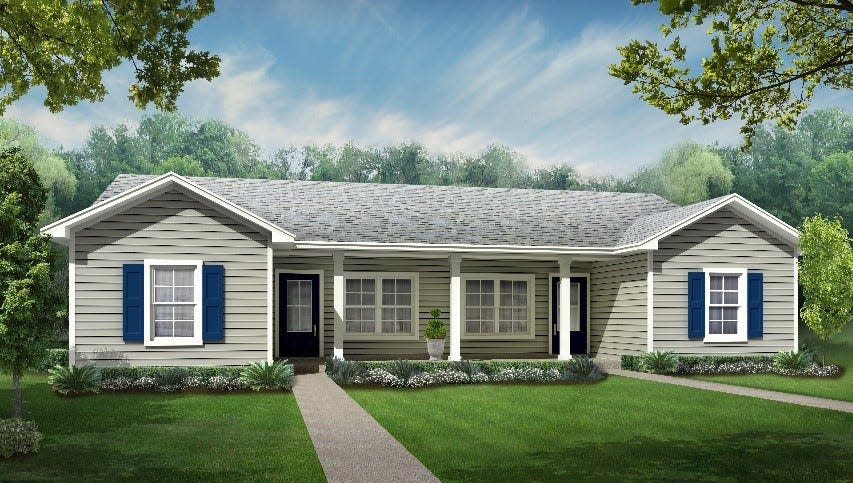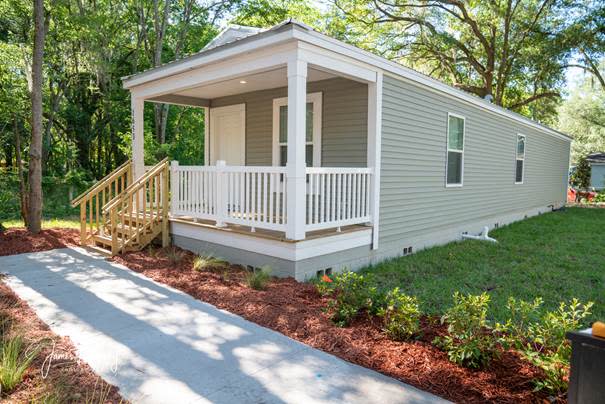Gainesville's housing crisis has roots in policies meant to maintain racial segregation
Based on patterns from the last two years, more than 60,000 new neighbors are expected to join our community over the next decade. I am excited to welcome our new neighbors. We must either find space for them within our existing urban environment or they will be forced to live far away, clogging our roads, adding to our climate crisis and disconnected from the social fabric of our community.
Prior to 1958, Gainesville had only four zoning districts ("A" to "D"), with "A" the base residential designation. This zoning allowed for up to four homes per lot (now called a quadruplex). The districts got more intense from there.
They were easy to understand and flexible enough for a diversity of homes in every neighborhood. We can still see some of these legacy homes in historic neighborhoods like Pleasant Street and Duckpond.

So, what changed in 1958? Well, a decade prior a landmark Supreme Court case Shelley v. Kraemer (1948) ruled that cities could no longer separate housing on the basis of race.
Cities, including Gainesville, got to work on their zoning codes to maintain exclusive neighborhoods that would serve to maintain the racial segregation no longer allowed by law. This is called exclusionary zoning and was codified by the city of Gainesville in 1958.
Concurrent with these new exclusionary zoning changes was a new housing boom. The boom was fueled by Baby Boomers, fresh back from the war, perhaps from college and with well-paying jobs and access to credit.
Generous mortgage guarantees backed by the federal government opened up the housing market for millions of young families looking to buy their first home — but only if you were white, as the loan programs were not accessible for Black and brown Americans.
Most of the neighborhoods surrounding the traditional urban core of our city were built in the late 1950s to 1970s and all fell under the new more restrictive and exclusive zoning code passed in 1958. It is what reinforced the segregated housing pattern we still see today. It is also what continues to prevent more diverse housing options for families in most of our city.
There is a suite of solutions, but no single magic cure. First, we need to allow for gentle density (homes for up to four families in residential areas) throughout our city. This will allow more people at various income levels to choose where they live. By giving people a choice to live near their jobs and schools, we reduce auto-dependency and increase opportunity, diversity and inclusion. We must also create higher density in our urban core, between the university, downtown and the post-industrial areas adjacent to downtown.
More from Lauren Poe:
Gainesville's housing crisis borne of policy failures, supply-and-demand issues
Guaranteed income is a way to recognize everyone’s inherent dignity
The future of public health and safety
These two solutions will benefit current neighborhoods by welcoming new and diverse families, as well as help us achieve our environmental goals by reducing the need for so many cars, by creating more efficient building patterns and by allowing for more efficient service delivery. Layer on top of this preservation of current housing, we will start to see a real benefit for people looking for a safe place to live in a neighborhood that fits their needs.
We also must increase our investment in public housing. Part of this solution is partnering with housing non-profits like our community land trust, Gainesville Housing Authority and others to better leverage public/private partnerships. For people living below 80% of the area's median income, this is the only realistic path to a home.

Investment in workforce or middle-income housing is also crucial. Too many of our front-line workers are forced out of our community because of high housing costs. We need to welcome them back.
None of these actions will have an immediate impact on housing. If enacted, they will result in gradual and incremental improvement to our current housing crisis. They will ensure that current neighbors are able to stay and thrive, and that we are able to welcome new neighbors to add to the tapestry that is our great city.
These ideas are neither radical nor unusual, but really a return to traditional housing patterns of the past. They also just happen to be the decent thing to do.
Lauren Poe is mayor of Gainesville.
Join the conversation
Share your opinions by sending a letter to the editor (up to 200 words) to letters@gainesville.com. Letters must include the writer's full name and city of residence. Additional guidelines for submitting letters and longer guest columns can be found at bit.ly/sunopinionguidelines.
Journalism matters. Your support matters.
Get a digital subscription to the Gainesville Sun. Includes must-see content on Gainesville.com and Gatorsports.com, breaking news and updates on all your devices, and access to the eEdition. Visit www.gainesville.com/subscribenow to sign up.
This article originally appeared on The Gainesville Sun: Lauren Poe: The deep roots of Gainesville's housing crisis

